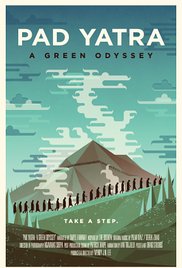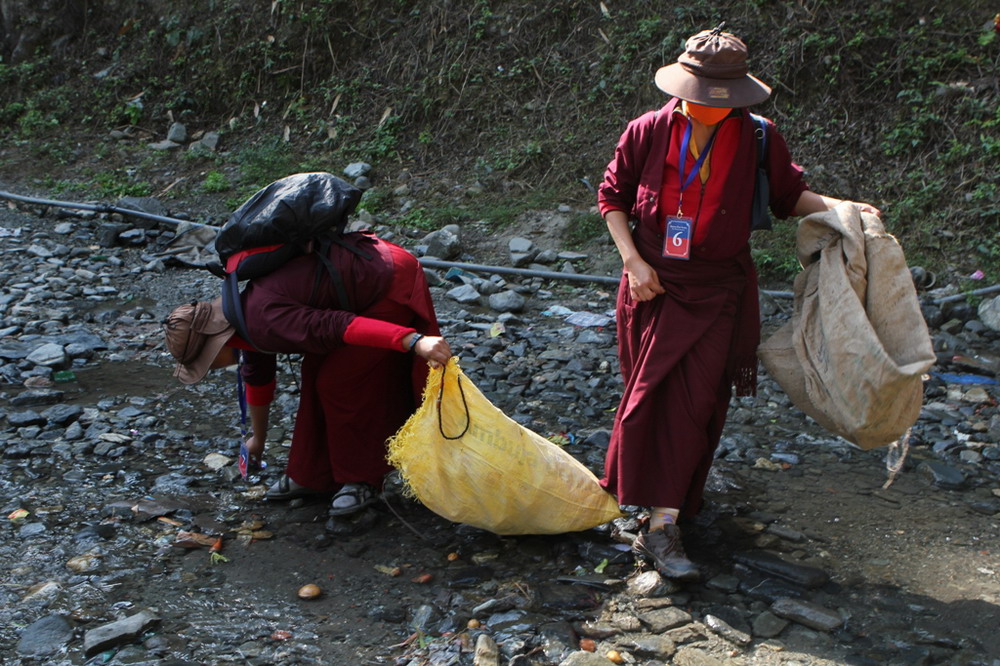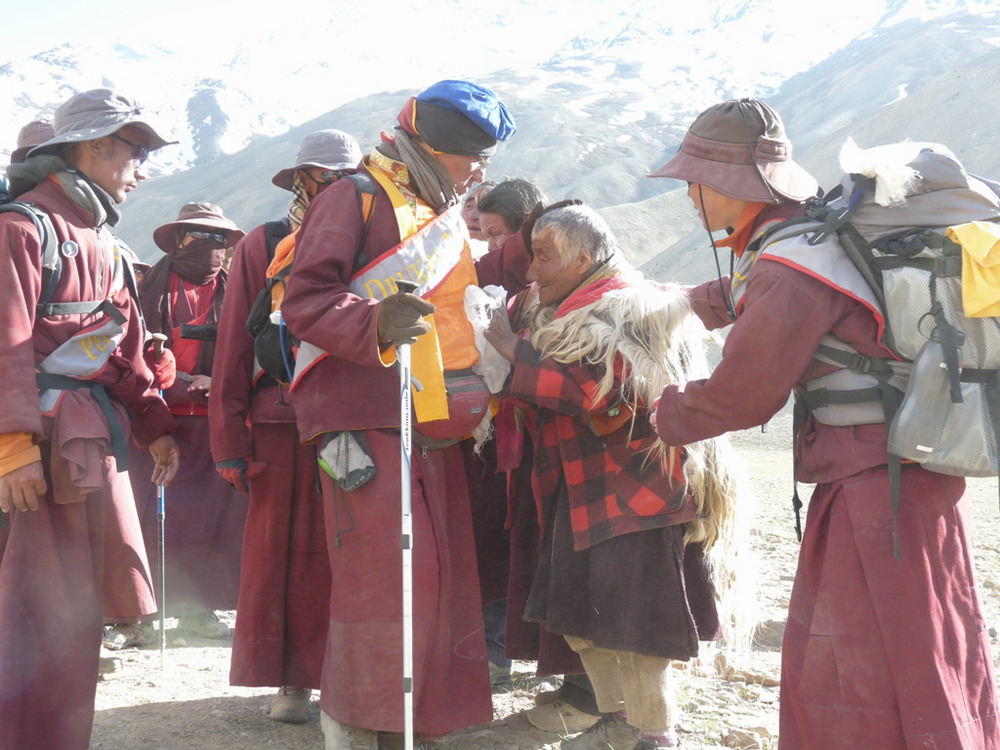Boredom Reaches New Heights
DIRECTED BY WENDY J.N. LEE/ENGLISH, TIBETAN/2013 (USA release)
 83 years ago Mahatma Gandhi challenged colonial powers by embarking on the Salt March. Over the 240-mile walk, thousands of Indians joined his procession protesting British taxes on salt. The march ended in the coastal village of Dandi, where Gandhi harvested grains of salt from the beach, an illegal act at the time. Mass protests sparked across the countryside; peasants began making their own salt, boycotting British products. Seventeen years later, after dozens of creative shows of non-violence, the Indian people gained their independence from the British behemoth. Gandhi’s inaugural Salt March and similar ones after it were termed pad yatra, Hindi for “journey by foot.” Many spiritual leaders and government officials since have ventured on pad yatra to educate villagers on social issues and call attention to particular causes. At its best, a pad yatra is an inspirational, world changing event. At its worst it is the subject of a middling documentary.
83 years ago Mahatma Gandhi challenged colonial powers by embarking on the Salt March. Over the 240-mile walk, thousands of Indians joined his procession protesting British taxes on salt. The march ended in the coastal village of Dandi, where Gandhi harvested grains of salt from the beach, an illegal act at the time. Mass protests sparked across the countryside; peasants began making their own salt, boycotting British products. Seventeen years later, after dozens of creative shows of non-violence, the Indian people gained their independence from the British behemoth. Gandhi’s inaugural Salt March and similar ones after it were termed pad yatra, Hindi for “journey by foot.” Many spiritual leaders and government officials since have ventured on pad yatra to educate villagers on social issues and call attention to particular causes. At its best, a pad yatra is an inspirational, world changing event. At its worst it is the subject of a middling documentary.
Pad Yatra: A Green Odyssey opens with dramatic footage of the aftermath of flash floods that completely wiped out a small Himalayan village. The landslide is blamed on the “cloudburst,” a strong storm that was completely atypical for that part of the world at that time of the year. This inspires Tibetan Buddhist leader Gyalwang Drukpa to assemble a pad yatra that winds across the Himalayas with a 700 person entourage in an attempt to educate villagers on proper care for the earth. The thinking goes that the cloudburst was not a “natural” disaster, but a “man-made” disaster, that the earth is taking revenge (not so different from The Happening). Regardless of your beliefs on climate change—save that conversation for the rest of the internet—Pad Yatra: A Green Odyssey does little to convince skeptics and almost nothing to inspire believers.
Along the journey, the caravan picks up bottles and cans strewn about the countryside, 800 pounds worth in total. It is puzzling how such a sparsely populated place can produce so many Mountain Dew bottles; are we outsourcing our Bros to Tibet? The doggedness of the Buddhist nuns is given special attention, especially in relief to the weakness of the pansy Westerners who have come along the trip for a Camino de Santiago experience. Even though there is danger around every curve and down every incline, the film’s lack of focus or narrative wit prevents any feeling of suspense, worry, or sadly, interest. It’s like a dinosaur tour without the dinosaurs.

Director Wendy J.N. Lee attempts to weave together footage from the trip with an interview from a Western pilgrim and some spiritual advice from the Drukpa and none of it gels. It’s just over an hour of walking, picking up trash, walking, revelations about the nature of the universe, walking, helping injured animals, walking, biopic material about the Drukpa, walking, walking, people smiling, walking in snow, walking, planting trees, preachy title card, credits. Stock, iMovie-quality music and Daryl Hannah’s Quaaludes meet Discovery Channel narration doesn’t help any either.
The one potentially interesting subject, the aforementioned Gyalwang Drukpa, is given no context. He is apparently a holy man who has his own monastery up in the roof of the world. Like most Eastern spiritual leaders I’ve heard, he’s very learned, wise and compassionate. He wants to teach fish not to eat each other. Idealistic maybe, but his heart is in the right place. He teaches, “Spirituality is very important, not the religion. Spirituality is clean, kind, selfless mind, loving-kindness.” I thought American Christianity was rife with trite admonitions, but it seems you can achieve platitudes at any altitude.

His holiness Gyalwang Drukpa on his “Live to Love” campaign, apparently inspired by 90s R&B ballads.
I don’t mean to sound dismissive of the cause. Yes, the issue of climate change is worthy subject material for a movie. Yes, there is a lot more we can do to take care of the earth we have inherited. I believe that a pilgrimage like a pad yatra has the potential to be a world-changing, inspiring movement (and the movement seems to be catching on in Asia). But this a review of a movie, not a movement. Bottom line: if you have the opportunity to go on a pad yatra, start walking. If you see Pad Yatra on a marquee, walk away.

